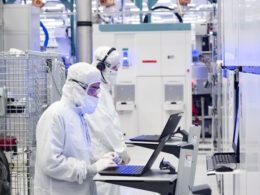Computing accelerator service provider Nvidia has announced its decision to release a new architecture annually, as declared by the founder. The successor to Nvidia’s Blackwell is expected to appear within a year.
As reported by The Verge, Nvidia has traditionally launched a new computational architecture every two years. With the Ampere featuring in 2020, Hopper in 2022, and Blackwell expected to market at the end of 2024. Nvidia revealed at its earnings report that it has been producing Blackwell chips for some time and will continue to ramp up production in the third quarter with customers receiving the accelerators in Q4. Nvidia CEO, Jensen Huang, stated, “We are going to see a great deal of revenue from Blackwell this year.”
Analysts speculated that Nvidia would present the Rubin computational architecture next year. Huang confirmed this at a recent quarterly event, stating, “Blackwell will be followed by another chip. We are sticking to an annual rhythm.” This announcement also confirms that Nvidia’s leway updates, new central processors, new GPUs, and new network components will follow the same annual schedule. Literally, a “mountain of new chips”, as put by Jensen Huang.
Huang also affirmed that the Blackwell solutions will be electrically and mechanically compatible with Hopper systems. This compatibility will ease the transition to the new hardware base. For instance, a shift from H100 to H200, which begins releasing this quarter, and later onto B100 (Blackwell) could be possible. The company also promised that existing software will operate more efficiently on the new Blackwell accelerators.
Huang dismissed apprehensions about a decrease in demand for Hopper generation accelerators with the upcoming Blackwell launches. The company expects the supply to lag behind demand till some part of next year during the transition to H200 and later Blackwell. Customers are purchasing tens of thousands of H100 accelerators. The company confirmed that the Hopper architecture currently drives most of Nvidia’s revenue growth in the accelerator segment. Huang confirmed that demand for Hopper continues to rise.





